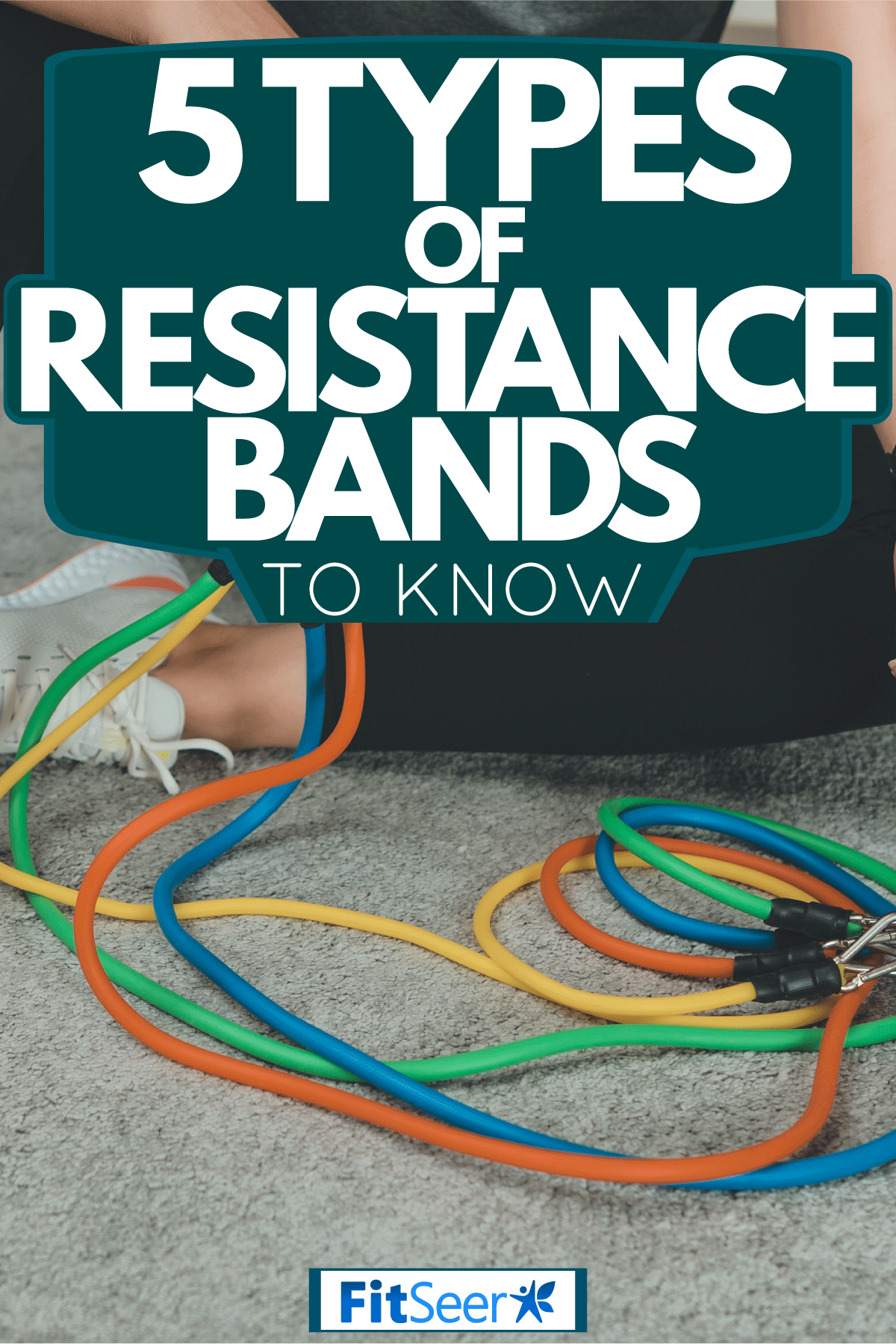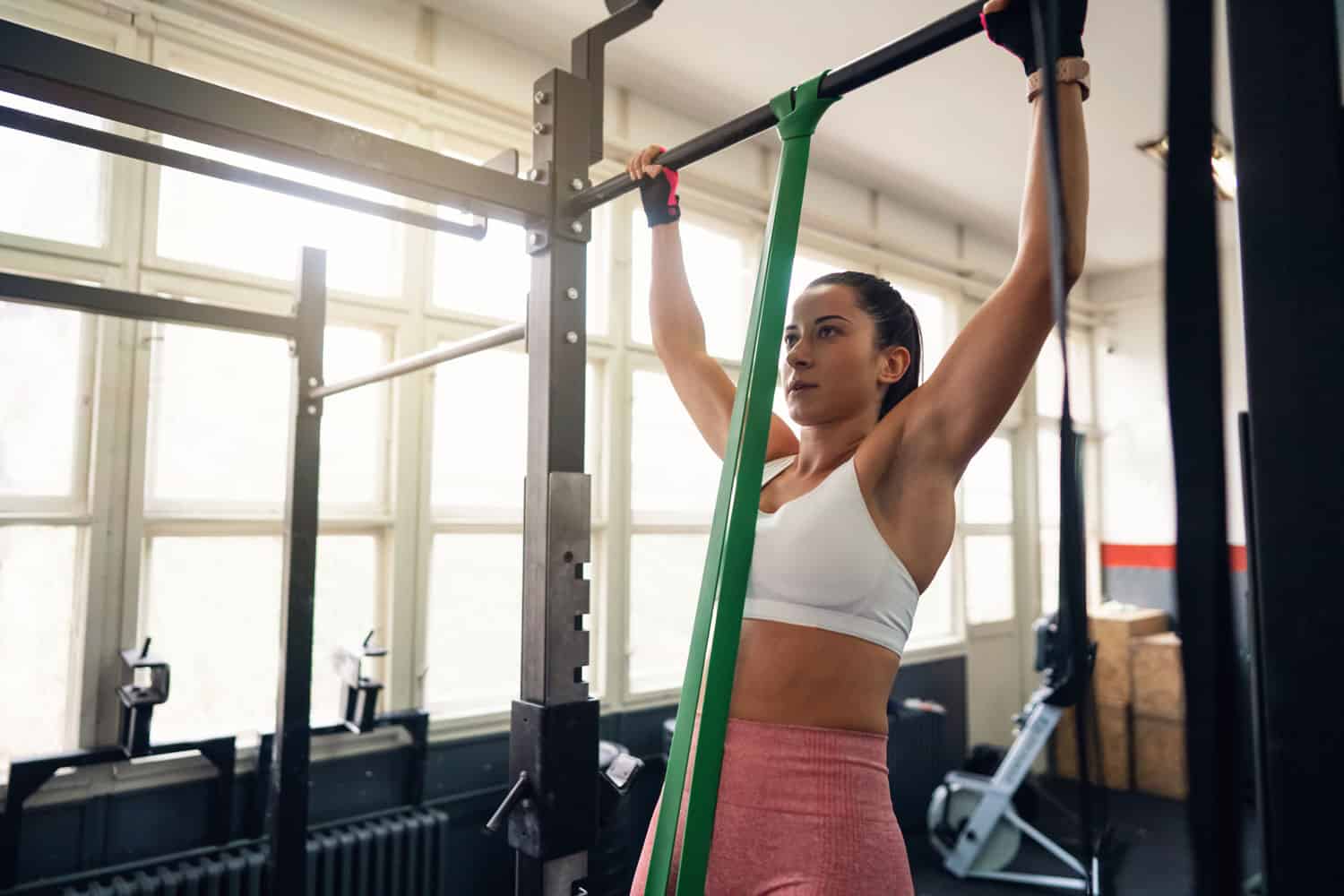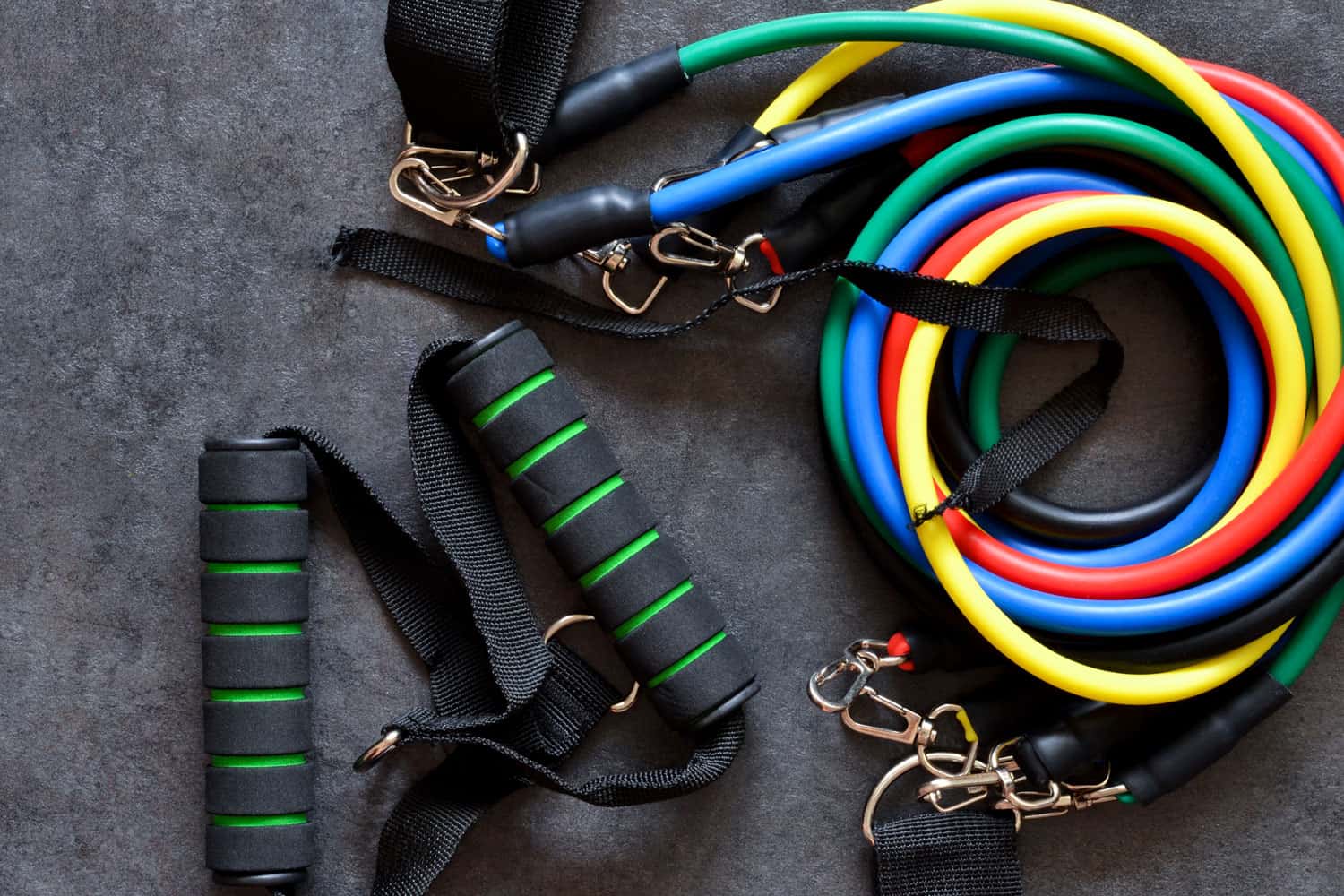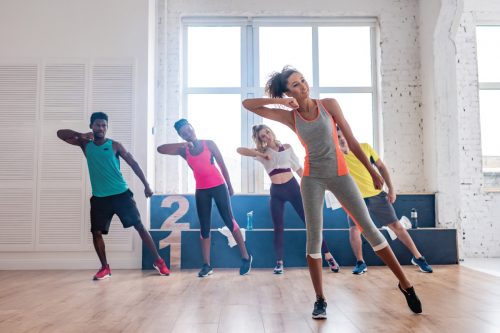Resistance bands are a useful workout tool for home or traveling. When you do not have free weights or workout machines available to you, you can use resistance bands as your small home gym. There are many different kinds of resistance bands that are designed for different kinds of workouts. In this post, we will break down all the variations of resistance bands you can find on the market today.
Here are 5 main types of resistance bands that you can use to exercise from home or while traveling:
- Power Bands or Pull-Up Bands
- Mini Bands
- Ankle Bands
- Stackable Tube Bands
- Figure-eight Bands
We will describe the workouts possible with each type of resistance band and give you examples of each type. So, keep reading so you can start your at-home workout routine.

Why Use Resistance Bands?
In a busy lifestyle, people still need to find time for exercise. Whether you often travel, work all the time, or don't have time to go to the gym, you can have a great workout by using resistance bands. The common perception is that athletes go to the gym to lift weights. You can get the same benefits and muscle-building potential by staying home and pulling resistant elastic bands.
Resistant Bands - Strong Enough to Endure Your Toughest Workout
The goal of working out and lifting weights is to build up your strength gradually. You need to have the confidence that pushing yourself with more resistance won't cause the band to snap and cause a serious injury. Resistance bands should be used and stored properly to avoid any failure that might cause the bands to snap. There are resistance bands that are thick and contain anti-snap technology. These kinds of bands will absolutely not break from too much power.
Other resistance bands, intended for lower body exercises, might break if used for larger upper body stretches. Imagine a seven-foot-tall person stretching a mini loop band over their head and stretching completely. If the person had enough strength to do this, then it is possible this mini loop band would break. A mini loop band is not intended to stretch that far. This is why it is essential to know these types of bands, so you can choose the right equipment for your next workout.
1. Power Bands or Pull-Up Bands
Power bands are most often referred to as pull-up bands. Doing pull-ups is very difficult, and many people are unable to do any pull-up reps. Pull-up bands are excellent for building up your strength. Using these resistance bands, you can eventually build up enough muscle to complete pull-up reps that you were unable to do before.

If you don't have a good location for a pull-up bar, these resistance bands are great for continuing your workouts when away from the gym. You will need to buy a bar that can attach to the resistance bands to do some exercises. The pull-up bands are one of the best options for building upper body strength. The exercises with these resistance bands will build your biceps, triceps, and chest.
Pull-Up Band Exercises
Shoulder Press
Step on one end of the loop with your feet placed next to each other. Use both hands to lift the other end of the loop straight up for one rep. Repeat.
Bent Row
Step on the middle part of the loop with your two feet. You will have a loop at each side. Bend over and grab each loop with your two hands. Pull up towards your chest to complete one rep. Repeat.
Intent Sports Pull Up Assist Resistance Band
This fully adjustable band comes with instructional videos and is easy to use for resistance up to 120 lbs. It has a lifetime warranty, so you know it will outlast any workout! Click here to buy it on Amazon.
Bionic Body Workout Bar
Having an attachable bar will be beneficial to complete your upper body workout. There are many options on the market for bars that can be attached to resistance bands with clips. These bars may also be used as attachments to workout machines. Click here to buy this bar from Amazon.
2. Mini Loop Bands
These kinds of resistance bands are the smallest of the different resistance bands on the market. The small size makes them perfect for lower body exercises. These are the most common resistance bands that people purchase for use at home. You can use these bands to work your legs, glutes, ankles, calves, and thighs. Below are some sample exercises.
Mini Loop Exercises
Single Leg Bridge Lift
Lay on your back with the bottom of your feet flat on the ground and knees bent toward the ceiling. Place the mini loop around both legs. For an easier exercise, place the band comfortably above both knees. For a more difficult exercise, place the band below your knees. Extend one leg into the air. Lift your hips off the ground into a bridge pose and hold it for two seconds. Slowly return your hips back to the ground for one rep.
Mini loop bands are excellent for working out the lower body, including the glutes. Learn more about resistance band exercises for the glutes by checking out this post, "Can You Grow Your Glutes With Resistance Bands?"
Fit Simplify Mini Loop Bands With Carrying Bag
These heavy-duty bands offer five resistance levels, from beginner, light to advanced, heavy, and conveniently pack into a carrying bag so you can workout wherever your next venture takes you. Click here to buy it on Amazon.
3. Ankle Bands
Ankle bands are looped resistance bands that can go around the ankles. This resistance band is used for lower body strength training exercises. Although it only goes around the ankles, this resistance will help you build muscle in your legs, glutes, ankles, calves, and thighs. These ankle bands can also be used to increase the intensity of upper body workouts, such as crunches.
Ankle Band Exercises
Crunches
Attach the ankle straps with appropriate resistance. Get into the crunch position with your back flat on the floor. Lift your legs off the floor. As you lift up to crunch, you should also add tension between your legs. This will make the crunch more difficult, while adding an additional muscle group to the exercise.
Prosource Leg Resistance Ankle Bands
This lightweight band is ready to go with you to provide heavy-duty resistance training with 15 to 20 lbs or durable latex resistance. Ankle padding keeps you comfy, with easy-adjust velcro attachment. Click here to buy it from Amazon.
4. Stackable Tube Bands
Stackable bands are tube bands that can be combined to increase the resistance. Tube bands are long, snap-proof, and come in varying amounts of resistance. With enough stackable tube bands and the correct attachments, you will have all you need for a home gym setup.
These tube bands can be used for upper and lower body workouts. There are handles, wrist attachments, and ankle attachments that can be used to exercise different parts of your body. Stackable bands can be purchased in a set with various attachments that will help you get a full-body workout anywhere you go.

Stackable Band Exercises
Reverse Fly
Stand on the middle of the resistance band(s). Lean your body slightly forward hinging at the waist and keeping your back arched. Bend your knees slightly. Pull the handles with both hands as far as you can while keeping your arms straight.
Lunge
Step on the middle of the resistance band(s) with one foot. The other foot is stretched back in a standing lunge position. Pull the two handles up by your ears. Then you can bend your back leg so the knee comes to the ground, then stand back up to standing lunge.
TheFitLife Exercise Resistance Bands With Handles
Five, stackable bands resist from 115 to 150 lbs and neatly pack into a carrying bag. Click here to buy these bands from Amazon.
5. Figure Eight Bands
Figure-eight bands are great for upper-body workouts. This can work out your arms, chest, biceps, and triceps. You can also put the two sides around your ankles for lower body exercises. The figure-eight band can be used for a full-body workout, just like the tube bands and pull-up bands. Check out these exercises.
Figure Eight Exercises
Triceps (upper body)
Use your right hand to hold one loop and drape the other loop over the middle of your back. Then grab the other loop with your left hand and elbow bent. Pull your right arm toward the ceiling. Repeat with the other side.
Leg Lift (lower body)
Place each foot through the two loops of the figure-eight. Lie on your right side. Lift your left leg in the air as far as you can comfortably move toward the sky. Repeat for the other side.
Tomoo Yoga Resistance Fitness Bands (3 Pk)
These portatable bands are made from durable rubber latex to outlast your toughest workout, wherever you go. Click here to buy this set from Amazon.
What Resistance Band Is The Best?
There are several factors that determine which resistance band is for you. Pull-up bands and tube bands are the most versatile resistance bands that can be used for a full-body workout. The figure-eight band is great for triceps and lower body exercises. Mini loop resistance bands are great for lower body exercises and strength training. They are not as useful for upper body workouts.
Many of the same exercises can be adapted to be used with different kinds of resistance bands. If you are able to use a door anchor, then there are even more exercises you can do from your home gym. The pull-up bands and tube bands are both great options if you have the ability to anchor to a door. They will give you the most variety of exercises.
If you're interested in more exercise options from home, check out this article for more information on Pilates home equipment, "What Do You Need For Pilates At Home? [The Complete List]."
In Closing
Resistance bands are very small and give you the opportunity for a good workout without going to the gym. You can choose one kind of resistance band set and get all of the muscle workouts you need for the week. You may also decide that you want all of the different types of resistance bands in your home gym for the variety of exercises you do.









![Read more about the article Bowling Ball Thumb Hole Too Small [How To Make It Bigger]](https://fitseer.com/wp-content/uploads/2022/05/Mans-hand-holding-a-red-bowling-ball-ready-to-throw-it-500x333.jpg)


